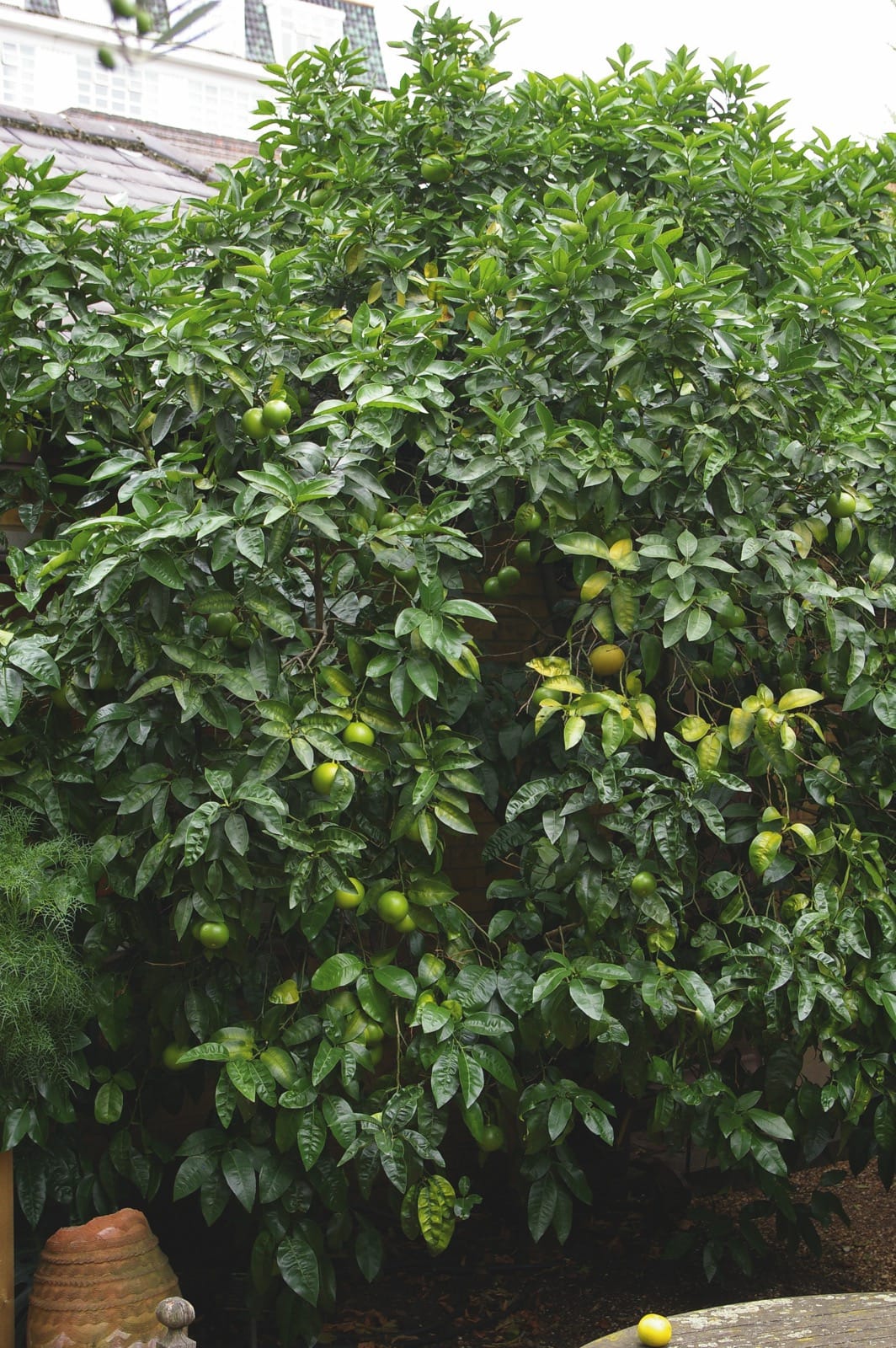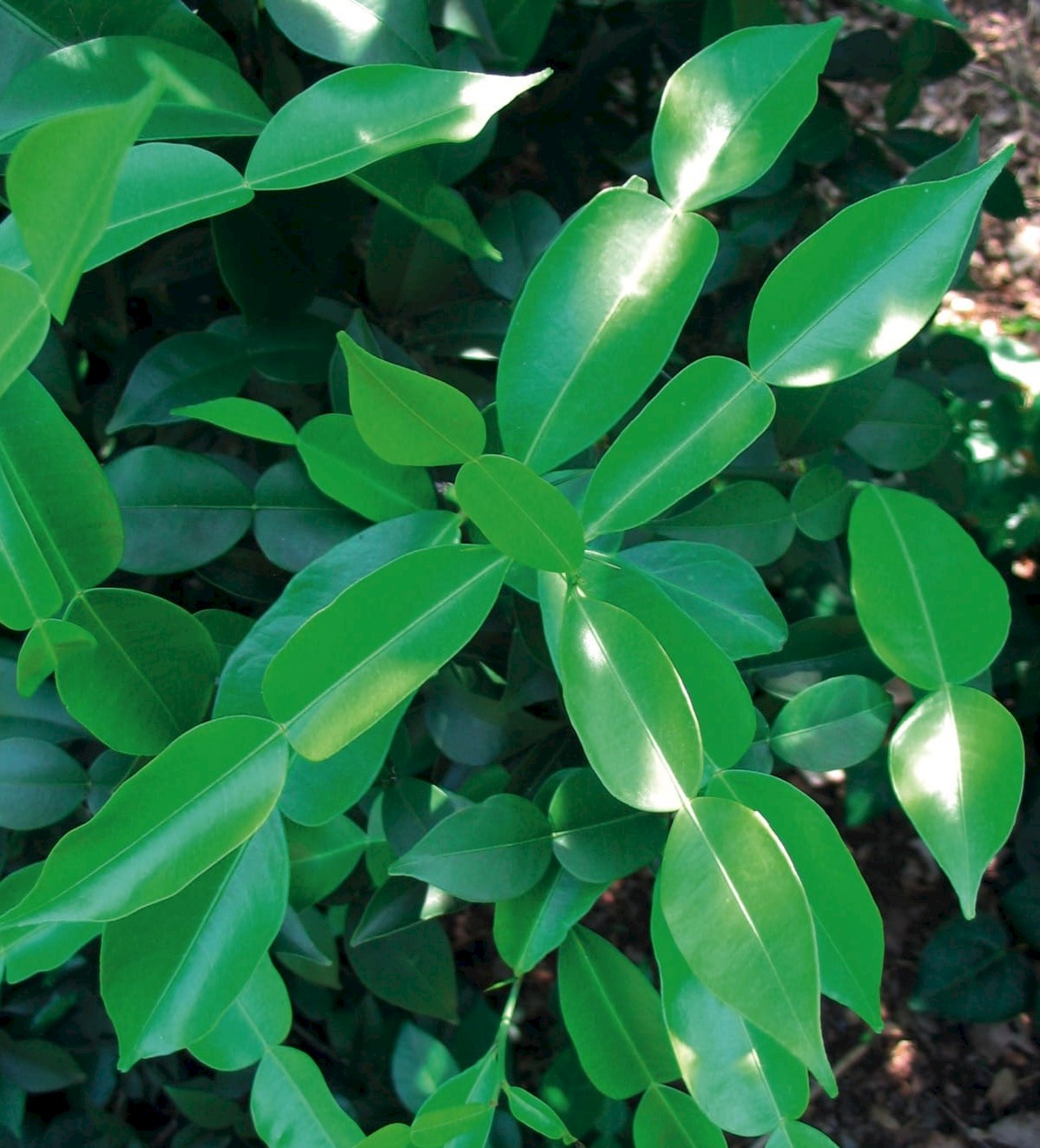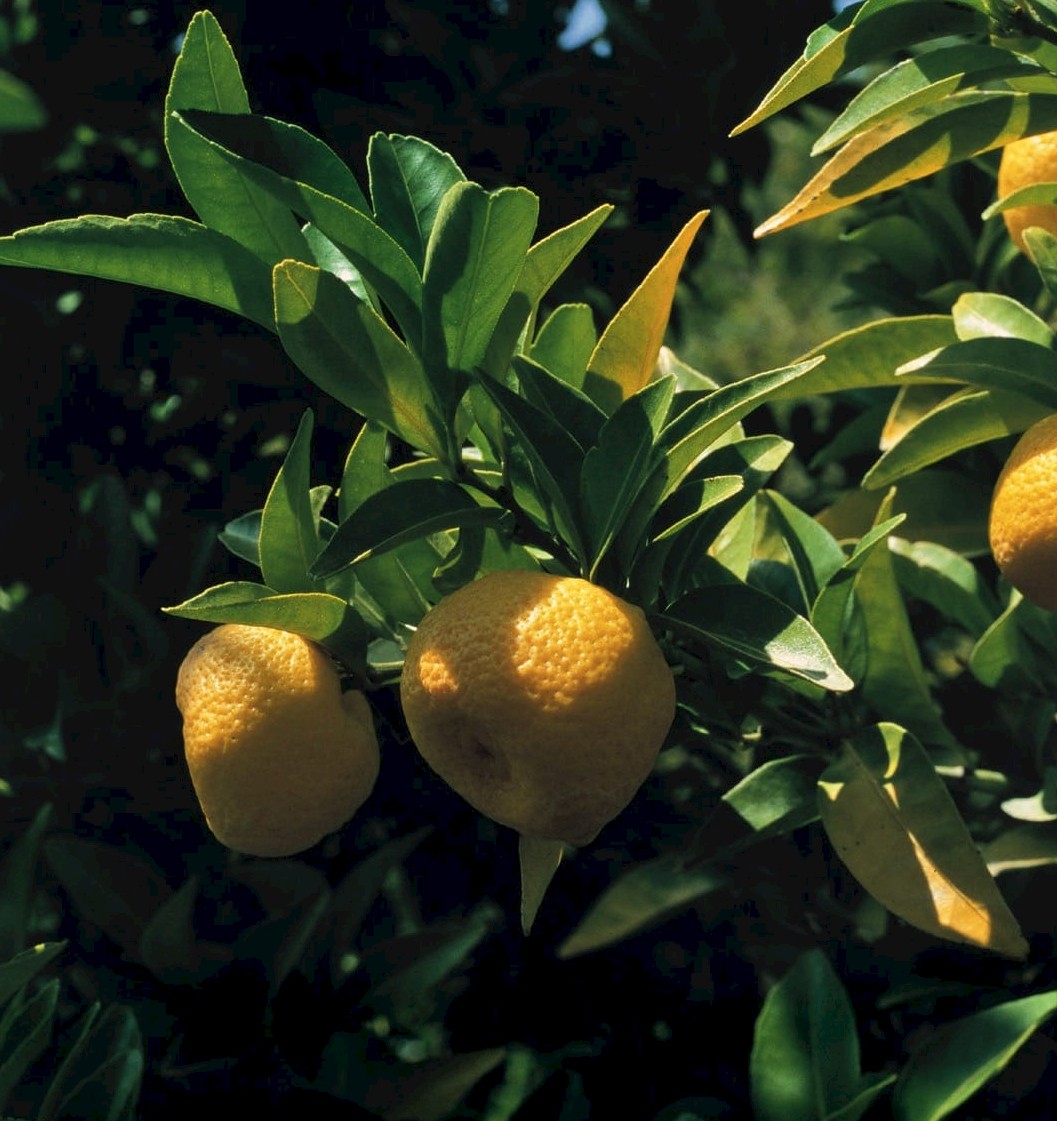Citrus
Credits
Article from New Trees by John Grimshaw & Ross Bayton
Recommended citation
'Citrus' from the website Trees and Shrubs Online (treesandshrubsonline.
Family
- Rutaceae
Common Names
- Citrus
- Lemons
- Limes
- Oranges
As with many plant genera of economic significance, the taxonomy of Citrus is complex; hybridisation is common and hybrid lines are perpetuated by apomixis. Swingle (1944) recognised 12 species with edible fruit and six species without, but the number of species with edible fruit may be as few as four (Mabberley 1997b). To further complicate the issue, DNA studies suggest that the related genera Microcitrus Swingle, Poncirus Raf. and Fortunella Swingle should be merged with Citrus (Freitas da Araújo et al. 2003). Citrus species are evergreen trees or shrubs, often with spiny branches. The leaves are alternate, fragrant, and usually have a winged petiole. The flowers occur in axillary clusters and are usually white and sweetly scented. They have a cup- or urn-shaped calyx with three to five segments; four to eight thick, imbricate petals; and 20–60 stamens with their filaments variously fused towards the base. The fruit is a hesperidium – a type of berry with a rough, leathery skin in which the flesh is divided into segments, and each segment is filled with juice-containing vesicles (Chang & Hartley 1993).
One of the most remarkable sights observed during the preparation of New Trees was a Grapefruit tree growing outdoors in a sheltered corner of the Chelsea Physic Garden, London, laden with ripe fruit at the end of January 2008 (see Plate 20, p. 8). This remarkable specimen, grown from a pip in 1948, stood outside in a pot in a nearby garden from the 1950s until 1990, when it was donated to the Physic Garden. Basking in the London heat island (see Mayor of London 2006), it is currently exceptional but is perhaps a precursor (and warning) of things to come. Marmalade is produced from the fruits (Chelsea Physic Garden database; D. Frodin, pers. comm. 2008). Several other Citrus taxa usually considered too tender for outdoor cultivation, including cultivars of C. ×limon, are maintained in pots but kept outside year-round in this remarkable garden.
These examples aside, the vast majority of Citrus are trees only for Mediterranean climates or the cool greenhouse; the two species described below, however, seem to have genuine hardiness and are worth trying, especially in areas with high summer temperatures to enable the wood to ripen. The shelter of a warm wall is to be recommended, so long as the soil is not too dry in summer. In areas where summer irrigation is practised, Sean Hogan recommends withholding water in late summer to encourage the wood to harden up (Cistus Nursery 2007–2008). Temperate gardeners can also try Meyer’s Lemon, C. ×limon ‘Meyer’, in very sheltered sites, while Cistus Nursery considers Citrus ‘Eustis’ and C. limettioides Tanaka to be hardy to –7 ºC. Just outside our area, Woodlanders Nursery in Aiken, South Carolina is pushing the boundaries of Citrus cultivation by offering a number of other cultivars. Many are hybrids with Citrus (Poncirus) trifoliata, in the group widely known as ‘citranges’, but a number of taxa are involved in the parentages. The nomenclature of cultivated Citrus is a muddle, to say the least, and names should perhaps always be accepted at face value only. There is something very pleasing in the idea of growing one’s own citrus outdoors, and it could be attempted more often in the milder parts of our area: C. trifoliata is all very well, but it makes truly horrible marmalade. All Citrus should be grown in fertile acidic soils with pH 5–6 and abundant available iron, but excessive organic material should be avoided. Patent fertilisers for Citrus are available and are used for C. tachibana at Quarryhill (W. McNamara, pers. comm. 2004).



